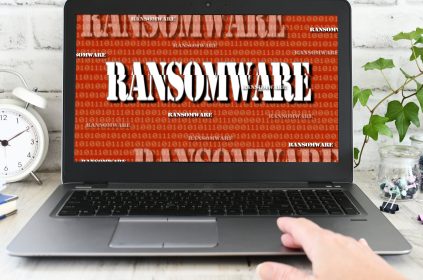Jane, a busy office manager, was sorting through her email inbox on a hectic Monday morning when she spotted an email marked as urgent. The subject line read, “Immediate Action Required: Password Reset.” The email appeared to be from her company’s IT department, informing her that her password had expired and needed to be reset immediately to prevent unauthorized access to her account.
Feeling rushed and concerned about her account security, Jane didn’t notice the slight misspelling in the sender’s email address. She clicked on the link provided in the email, which led her to a webpage resembling her company’s password reset portal. Without hesitation, she entered her current username and password, followed by her new desired password.
A few hours later, Jane received a call from her company’s actual IT department, informing her that several of her colleagues had received suspicious emails requesting a password reset. Jane suddenly realized that she had fallen victim to an email phishing attack. The email she received was a carefully crafted deception, designed to exploit her sense of urgency and trust in her company’s IT department.
By clicking on the fraudulent link and entering her login credentials, Jane had inadvertently provided the attackers with access to her account. This enabled them to infiltrate the company’s network, steal sensitive data, and potentially launch further phishing attacks against her colleagues. Jane’s experience highlights the dangers of email phishing attacks and the importance of maintaining a vigilant approach when dealing with email messages, even when they appear to come from trusted sources within an organization.
What is Email Phishing?
In the realm of cybersecurity, social engineering techniques have emerged as some of the most effective methods for compromising unsuspecting users. Among these techniques, phishing attacks, particularly email phishing, stand out as one of the most prevalent and damaging threats. Email phishing is a type of social engineering attack wherein cybercriminals impersonate trusted entities to deceive individuals into divulging sensitive information, such as login credentials, personal data, or financial information. These attacks commonly employ seemingly legitimate emails to lure victims into clicking on malicious links, downloading malware-laden attachments, or submitting their confidential information on fake web pages.
We aim to provide a comprehensive analysis of phishing attacks, discussing their various forms, underlying mechanics, and the strategies employed by cybercriminals to deceive users. Central to this analysis is the recognition that email phishing exploits the human element of security, leveraging users’ trust, curiosity, or fear to achieve the attacker’s objectives. We will delve into the psychological and technical aspects of these attacks, examining how cybercriminals manipulate human emotions and behavior to bypass traditional security measures. Additionally, we will explore the countermeasures that can be employed to mitigate the risks associated with phishing attacks, emphasizing the importance of education, awareness, and the adoption of robust security practices to protect individuals and organizations from this ever-evolving threat.
Mechanics of Email Phishing Attacks
Email phishing attacks generally follow a similar pattern, consisting of the following stages:
Research and Reconnaissance: In the initial stage, cybercriminals gather information about their intended target group. This information may include names, email addresses, job titles, or other personal data that can be used to personalize the phishing message and increase its chances of success.
Crafting the Phishing Email: The attacker then creates a convincing phishing email, incorporating the gathered information to give the appearance of legitimacy. This may involve mimicking the branding, logos, and language of a trusted entity, or using personal details to create a sense of familiarity and authenticity.
Distribution: Once the phishing email is crafted, it is sent to the targeted individuals, typically using a mass mailing approach or a more focused, targeted approach for better success rates.
Exploitation: When the recipient interacts with the phishing email, such as by clicking on a malicious link or downloading an attachment, the attacker’s desired outcome is achieved. This could involve the installation of malware, the submission of sensitive information through a fake login page, or further propagation of the phishing campaign.
Data Exfiltration and Use: After the attacker has successfully obtained the victim’s sensitive information, they may use it for various nefarious purposes, such as identity theft, financial fraud, or gaining unauthorized access to the victim’s accounts.
Tactics Employed in Email Phishing Attacks
Cybercriminals use a variety of tactics to increase the effectiveness of their email phishing attacks:
Urgency: Phishing emails often create a sense of urgency, prompting the recipient to take immediate action to avoid negative consequences, such as account suspension, unauthorized charges, or missed opportunities. This sense of urgency can cause the victim to act impulsively, overlooking red flags that may indicate a phishing attempt.
Authority: Attackers may impersonate authoritative figures or institutions, such as a company’s CEO or a government agency, to instill a sense of trust and compliance in the victim. By leveraging the victim’s respect for authority, the attacker increases the likelihood that the phishing email will be acted upon.
Familiarity: Phishing emails may be designed to appear as though they come from a known contact, such as a friend, colleague, or trusted service provider. This familiarity can lower the recipient’s guard and increase the chances of a successful attack.
Fear: In some cases, phishing emails may exploit the victim’s fear, such as the fear of missing out on an attractive offer, the fear of legal repercussions, or the fear of losing access to essential services. By tapping into these fears, attackers can manipulate victims into taking the desired action.
Countermeasures to Safeguard Against Phishing Emails
Phishing emails continue to be a pervasive threat in the realm of cybersecurity, with cybercriminals constantly devising new tactics and techniques to deceive unsuspecting users. The key to protecting oneself and one’s organization from these malicious attacks lies in implementing effective countermeasures. This section will provide an in-depth discussion on various strategies and best practices that can help to safeguard against phishing emails.
User Education and Training:
One of the most crucial steps in combating phishing emails is educating users about the risks and warning signs associated with these attacks. Organizations should provide regular training and awareness programs to help employees identify phishing emails and understand the appropriate course of action when such an email is encountered. Topics covered in these programs should include:
- Common signs of phishing emails, such as generic greetings, poor grammar and spelling, or suspicious sender addresses.
- The risks associated with clicking on links or downloading attachments from unknown sources.
- How to verify the legitimacy of an email before taking any action.
- Reporting mechanisms for suspicious emails within the organization.
Email Filtering and Anti-Phishing Solutions:
Organizations should implement robust email filtering solutions that can detect and block phishing emails before they reach users’ inboxes. These solutions may include:
- Spam filters that analyze email content for common phishing characteristics and block suspicious emails.
- Domain-based Message Authentication, Reporting, and Conformance (DMARC) protocols to authenticate the sender’s domain and prevent email spoofing.
- Advanced threat protection solutions that use artificial intelligence and machine learning to analyze email content and block phishing attempts in real-time.
Multi-Factor Authentication (MFA):
MFA provides an additional layer of security by requiring users to present two or more forms of identification before accessing sensitive information or systems. By implementing MFA, organizations can reduce the risk of unauthorized access to accounts, even if a phishing attack successfully compromises a user’s credentials. Common forms of MFA include:
- Hardware tokens that generate a one-time passcode (OTP).
- Authentication apps that generate time-based OTPs on a user’s mobile device.
- Biometric authentication, such as fingerprint or facial recognition.
Regular Software Updates and Patch Management:
Phishing emails often exploit known vulnerabilities in software to install malware or gain unauthorized access to a user’s device. Organizations should implement a robust patch management strategy to ensure that all software, including operating systems, web browsers, and email clients, are updated with the latest security patches.
Browser Security Settings and Add-Ons:
Web browsers play a significant role in protecting users from phishing attacks, as many phishing emails lead victims to malicious websites. Organizations should enforce strict browser security settings, such as blocking pop-ups, disabling automatic downloads, and disabling browser autofill features for sensitive information. Additionally, browser add-ons, such as anti-phishing toolbars, can provide an extra layer of protection by warning users of known phishing websites.
Incident Response Plan:
Despite the best efforts to prevent phishing attacks, it is essential to have a well-defined incident response plan in place in case an attack is successful. This plan should outline the steps to be taken to contain the damage, recover from the attack, and prevent future occurrences. Key elements of an incident response plan include:
- Clear guidelines on reporting phishing incidents within the organization.
- A designated incident response team responsible for investigating and remediating phishing attacks.
- A communication plan to inform affected users and stakeholders of the incident and the steps being taken to address it.
Phishing emails remain a significant threat to organizations and individuals alike. By implementing a combination of user education, technological solutions, and proactive security measures, it is possible to minimize the risk associated with these deceptive attacks.


















